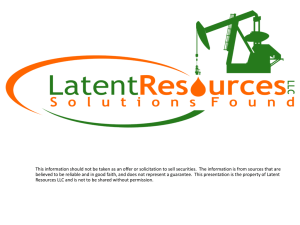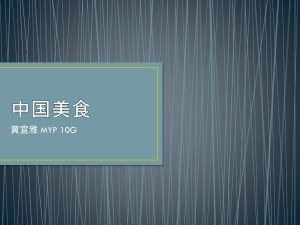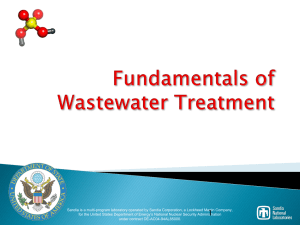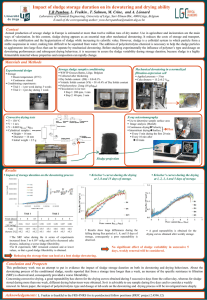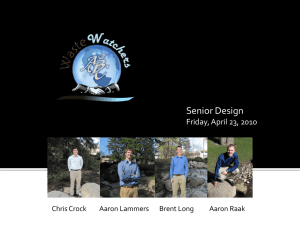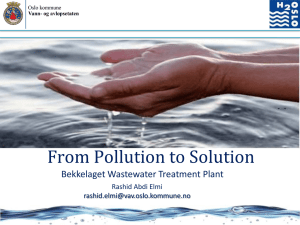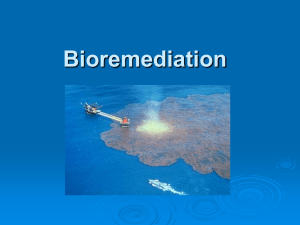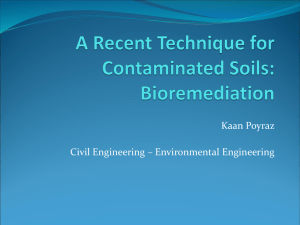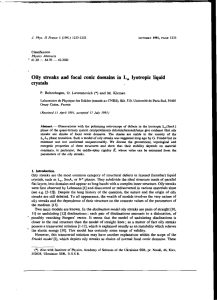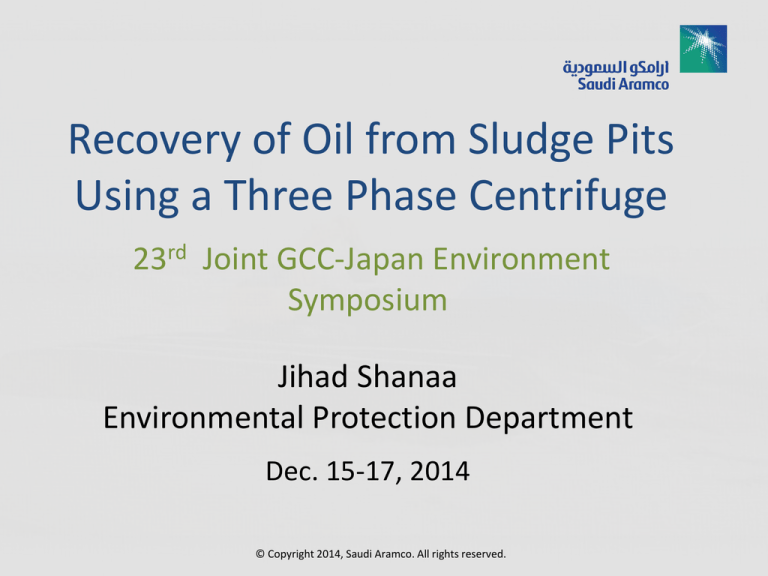
Recovery of Oil from Sludge Pits
Using a Three Phase Centrifuge
23rd Joint GCC-Japan Environment
Symposium
Jihad Shanaa
Environmental Protection Department
Dec. 15-17, 2014
© Copyright 2014, Saudi Aramco. All rights reserved.
Presentation Outline
• Typical Industrial Waste Generated by Oil
&Gas Industries
• Sources of Oily Waste Generation
• Environmental Impacts
• Oily Waste Management
• Saudi Aramco WM Objectives
• Case Study – GOSP
• Summary
Typical Hazardous Waste Streams
Generated O&G Industries
•
•
•
•
•
Oily water
Oily sludge
Spent catalyst
Spent caustic
Spent cleaning
solvents
• Spent filters
• Pyrophoric scales
• Contaminated soil
• Contaminated drums
• Infectious/medical
waste
• Radioactive waste
• Laboratory waste
Sources of Oily Waste Generation
• Upstream Activities
– oily pits
– Drill cutting waste
• Downstream Activities
– Refinery wastewater sludge
– Tank bottom sludge
– Pipeline scraping facilities
Environmental Impacts
•
•
•
•
•
•
•
Health
Soil degradation
Groundwater contamination
Surface water
Flora and fauna
Air quality
Property value
Oily Waste Management – Old Practices
• Land farming
–
–
–
–
Resource degradation
Soil and groundwater contamination
Liability risks
Works only under controlled
environment
– Requires constant monitoring
Oily Waste Management —
New Practices
• Resource recovery technologies
– Three phase centrifuge
– Thermal desorption
– Waste to energy
• Bioremediation
– Resource recovery is no longer feasible
– Reduce contaminants concentration
– Effective under controlled conditions
Saudi Aramco WM Objectives
• Minimize waste generation
• Recover resources from waste
• Seek best demonstrated environmental
technologies
• Protect soil and groundwater
• Protect human health and ecological resources
• Preserve land for future generations
Case Study
Project Objectives
• Decontamination of oily sludge pond
– Removal of liquid
– Recover saleable oil
– Treat wastewater
• Enhanced bioremediation
– Biopile technology for contaminated
sand
– Bioreactor technology for oily sludge
Centrifuge Setup for Oil Recovery
Separation of Oil, Water and Solids
• Three-Phase Centrifuge Unit
– Production capacity -10 m3/h
– Quick mobilization and
demobilization time
– Removal of oil and sludge
– Heat treatment
– Centrifugation to separate oil,
water and solids
– Over 8,500 m3 of oily water
treated
Engineered Biopiles
Process Condition in Biocells
• Microbial inoculum
developed onsite
• Moisture: 8-12%
• pH 6.7 – 7.4
• Total microbial count: 105 –
108 CFU/g
• Air supply
• Covered to retain moisture
• Treatment time 4-12 weeks
Biopile Treatment Results
Average TPH and Moisture Treatment Biocells
Treated Biocell Being Leveled
Recovered Oil Sample
• Around 50,000 bbl of oily
sludge removed from the
pit
• 47,000 bbl (>7,700 m3 )
of oil recovered
• Recovered oil value
covered remediation
costs and generated
revenue
Summary
• Successful demonstration of bioreactor technology
for oily sludge treatment.
• Oily waste shall be looked at as a resource NOT as a
waste.
• Recovery of oily waste reduces environmental risks
and increases company revenues
• Bioremediation can reduce hazardous contaminants
in soil and meet regulations
• Onsite recovery and bioremediation reduces
transportation risks
Thank You
Questions?

